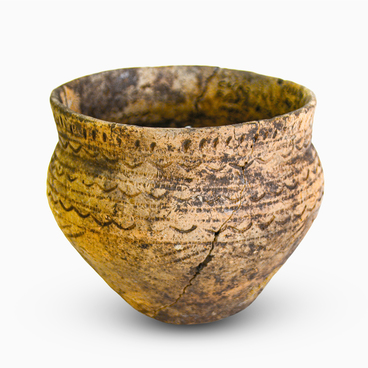A mano, a rubbing stone, or alternatively — a courant or a pestle (pestle-rubbing stone), is a stone tool used for grinding or crushing any substances (grains, minerals, paints, medicinal plants, ores). This item could have a different shape.
The rubbing stone presented in the museum’s collection is made of a single piece of stone by chipping and grinding. The item is in good condition. The rubbing stone is elongated-rectangular, oblong. It has two parts: a rounded in cross section handle and a flattened rectangular working part. The location and details of the discovery are unknown. This rubbing stone was kept in the personal collection of local historian, organizer and first director of the Bolsherechensk Museum of Local Lore Vasily Semenovich Anoshin.
The shape of the product testifies to the developed art and technology of stone processing. To give two parts of one whole product a different shape, great experience and mastery of complex skills were required. The majority of such products have a simple cylindrical shape. For these purposes, pebbles of the required sizes could be used. The high labor costs for the manufacture of such an ordinary object probably indicate the special importance of the product to the customer.
The rubbing stone was used in an upright position to rub or crush any substances. It could be used to produce various types of flour, process ore, make paints from natural dyes and for other purposes. Rubbing stones were also used for processing other stone tools by grinding them.
Rubbing stones were made of various rocks and had
different shapes: flat discs, rounded and others. Often, ordinary pebbles
served as rubbing stones: some of them bear traces of characteristic wear-out.
They are mostly found in Neolithic, Eneolithic and Bronze Age settlements. The
finds of these tools indicate the early settlement of the territories of the
Middle Irtysh region, the presence of extensive cultural and economic ties and
advanced stone processing techniques. Such tools were widely used in economic
activities. The raw materials for the guns were brought from the Urals or
Altai.

